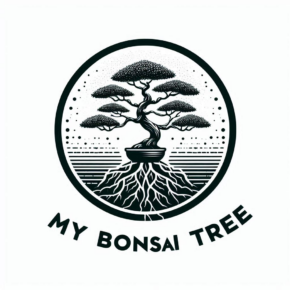When it comes to bonsai trees, many species of trees and shrubs are suitable for cultivation, each with its own unique characteristics. One such candidate is the boxwood shrub (genus Buxus), which has gained popularity in the bonsai world for its adaptability, evergreen nature, and distinctive appearance. While boxwood bonsai can offer a rewarding experience for bonsai enthusiasts, it also comes with its own set of challenges. Below, we’ll dive into the advantages and disadvantages of growing boxwood as a bonsai, along with its special features and care requirements.
Advantages of Growing Boxwood as a Bonsai
Hardy and Resilient Nature – One of the key benefits of using boxwood for bonsai is its hardy and resilient nature. Boxwood shrubs are known for their ability to withstand a variety of environmental conditions, including drought, heat, and frost. Boxwoods are rated USDA 5-9 in terms of hardiness zones, with a few cultivars rated for Zone 4. These means they can handle temperatures as low as -20°F (when planted in the ground). Boxwoods are reliably “deer resistant”, which makes them a popular choice for landscaping and also an asset when it comes to bonsai.
Dense Foliage and Small Leaves – Boxwoods have naturally dense foliage and small leaves, which make them perfect for bonsai cultivation. The dense growth allows for easy shaping and can create a visually appealing compact canopy. Their small leaves make the tree look proportionate and realistic, even in smaller bonsai sizes.
Slow Growth Rate – Boxwood shrubs have a slow growth rate, which can be both an advantage and a disadvantage. On the positive side, this slow growth means that boxwood bonsai require less frequent pruning and shaping, allowing for a low-maintenance option compared to faster-growing species. This also helps maintain the design you’ve established for your tree over long periods without major changes.
Versatility in Bonsai Styles – Boxwoods are incredibly versatile in terms of the styles you can create with them. Their naturally flexible branches make them suitable for informal upright, slanting, broom, and cascade styles. Whether you’re aiming for a natural or more structured bonsai appearance, boxwood can easily be trained into a variety of designs.
Evergreen Beauty – Boxwood shrubs are evergreen, meaning they maintain their green leaves year-round. This provides a consistent look and makes them ideal for those who want their bonsai to have an appealing appearance throughout all seasons.
Disadvantages of Growing Boxwood as a Bonsai
Susceptibility to Pests – Boxwood shrubs are somewhat prone to pests, particularly boxwood leafminers, mites, and scale insects. These pests can cause damage to the foliage and impact the overall health and appearance of your bonsai. Regular monitoring and maintenance are necessary to keep these problems in check.
Root Pruning Challenges – Boxwood shrubs have a somewhat fibrous root system, which can make root pruning challenging. When grown as bonsai, their roots need to be pruned carefully, as boxwoods don’t recover as quickly as other species from aggressive root work. Care must be taken to ensure the tree’s health during repotting and root trimming sessions.
Sensitivity to Overwatering – Boxwood bonsai can be sensitive to overwatering, which may lead to root rot and other fungal diseases. Their slow growth means they do not need excessive amounts of water, but it can be tricky to strike the right balance between keeping the soil moist and not over-saturating it. Proper drainage and a well-aerated soil mix are critical for the health of boxwood bonsai.
Slow Growth for Advanced Styles – While slow growth can be an advantage for maintenance, it can also be a disadvantage for those looking to create intricate or highly developed bonsai styles. Developing a thick trunk or refining intricate branch structures can take significantly longer with boxwood compared to faster-growing species, which might not be ideal for those seeking faster results.
Limited Trunk Thickening – Boxwoods generally have thin trunks, and while they do develop some taper with time, it can be harder to achieve the thick, impressive trunk that’s often desirable in bonsai. Advanced techniques like trunk fusion or heavy pruning might be necessary to get the desired trunk thickness.
Unique Characteristics of Boxwood Shrubs for Bonsai
Boxwood shrubs bring several unique features that influence their cultivation as bonsai trees. Their dense, fine-textured foliage makes them excellent candidates for creating full, compact canopies. The small leaves also make it easier to maintain a natural look even on a miniature scale. However, their bark is relatively smooth, and over time, it doesn’t develop as much texture as some other bonsai species like maples or junipers. This smoothness can affect the visual appeal for those looking for a rugged, ancient appearance.
Additionally, boxwoods can tolerate light shade, which can be useful if you don’t have a full-sun location for your bonsai. However, to maintain compact growth and healthy foliage, it’s generally better to provide them with bright indirect light or full sun, depending on your region.
Care Tips for Boxwood Bonsai
- Watering: Water when the top inch of soil is dry, but avoid letting the roots sit in water. Good drainage is essential.
- Pruning: Prune regularly to maintain the tree’s shape and encourage back-budding. Cut back new shoots to two pairs of leaves to keep the shape tight.
- Light: Provide bright indirect light or full sun for compact, healthy foliage.
- Repotting: Repot every 2-3 years, but handle the roots gently as they can be sensitive to extensive pruning.
- Pest Control: Keep an eye on pests, and treat early if you notice any signs of infestation.
Conclusion
In summary, growing a boxwood shrub as a bonsai comes with both advantages and disadvantages. Its hardy nature, evergreen beauty, and dense foliage make it an excellent candidate for bonsai, while its slow growth and sensitivity to overwatering can pose challenges. With proper care, boxwood can become a stunning and manageable bonsai that’s a rewarding addition to any collection.
